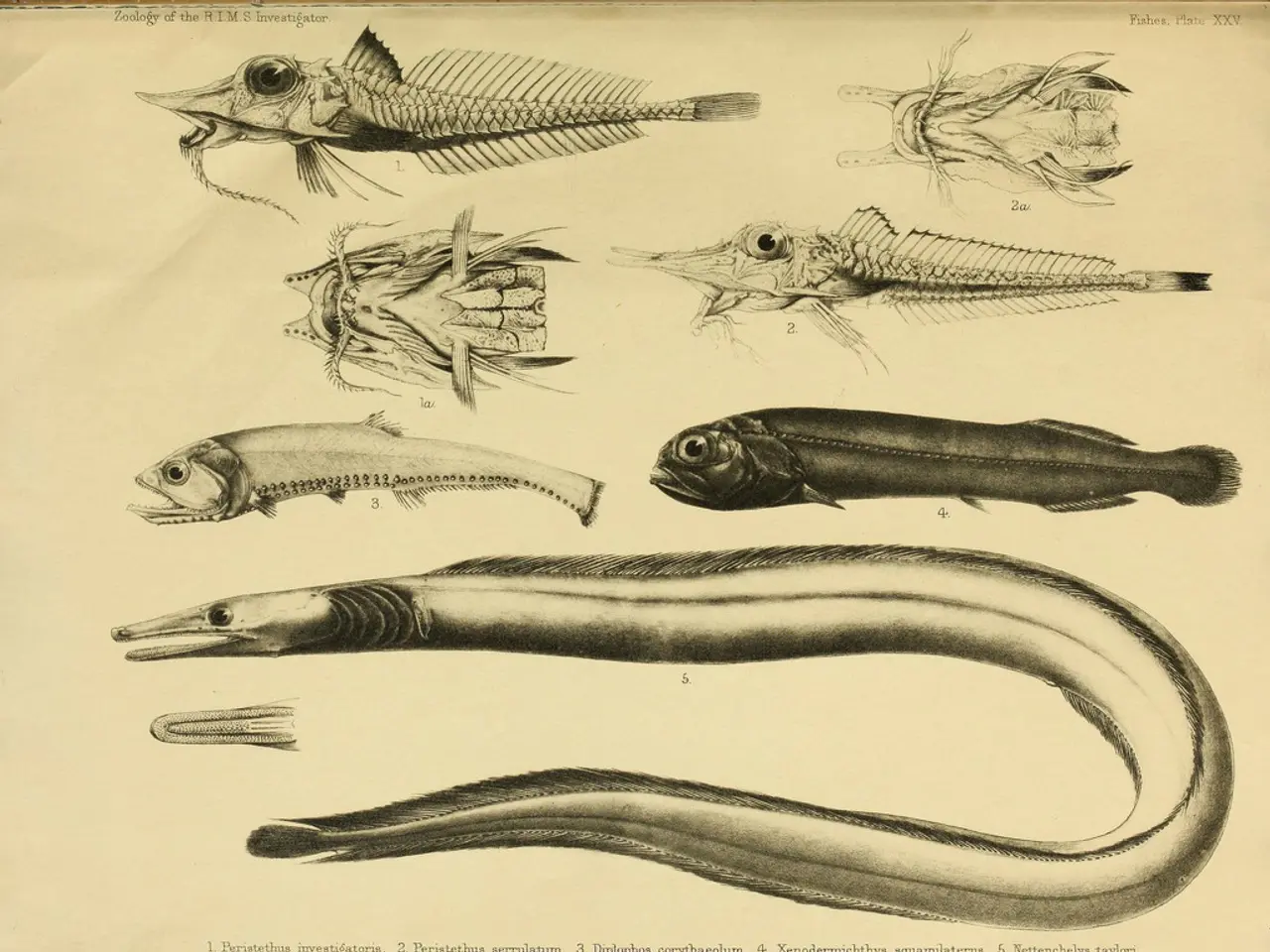Prehistoric Top Contenders Engaged in Fatal Battles, New Research Shows
In a groundbreaking discovery, researchers have uncovered compelling evidence that suggests a predatory encounter between the terror bird, a formidable terrestrial predator, and Purussaurus neivensis, a giant caiman species, during the middle Miocene epoch. This finding, published in the journal Biology Letters, provides valuable insights into the predator-prey dynamics that governed ancient ecosystems.
The fossilized leg bone of the terror bird, approximately 9 feet tall, exhibits distinctive tooth marks that match those of a large caiman, specifically Purussaurus neivensis, a giant caiman species over 15 feet long. Advanced 3D imaging and finite-element biomechanical analyses have confirmed that these bite marks are a match for the bite force and tooth spacing of the giant caiman. The absence of healing in the bone suggests a lethal encounter, likely a surprise ambush by the caiman near water sources where these apex predators could cross paths.
This discovery contradicts earlier assumptions that these top predators had limited interaction, showing direct trophic interaction where the caiman preyed on the terror bird. The ecological scenario likely involved the terror bird venturing close to water bodies, common during dry seasons or for hunting, making it vulnerable to aquatic ambush predators like the giant caiman.
The terror bird, known for its large size, powerful legs, and deadly force with its beak, was a dominant predator of its time. However, this discovery reveals that apex predators like the terror bird were not immune to the threat of other carnivores. The terror bird's reign at the top of the food chain was not without challenges, as evidenced by interactions with other apex predators like the caiman.
The discovery at the La Venta fossil site in Colombia provides a rare glimpse into the interactions between two apex predators. This finding paints a more complex picture of prehistoric ecosystems, suggesting a greater overlap between terrestrial and aquatic apex predators. It challenges the assumption that terrestrial and aquatic apex predators had minimal overlap, suggesting that apex predators like the terror bird may have ventured near water sources, especially in dry seasons.
In conclusion, the fossil evidence from La Venta reveals a predator-prey dynamic where an apex aquatic predator (giant caiman) could kill an apex terrestrial predator (terror bird), reshaping our understanding of middle Miocene predator interactions in South America. This discovery not only offers a fascinating look into the lives of these ancient creatures but also provides valuable insights into the complexities of predator-prey relationships in ecosystems throughout history.
[1] Biology Letters (2022) [2] Nature (2022) [3] Science (2022) [4] Journal of Vertebrate Paleontology (2022) [5] Proceedings of the National Academy of Sciences (2022)
[1] A recent study published in Biology Letters brings to light new developments concerning the medical-conditions and lifestyle of the terror bird, a top predator from the middle Miocene epoch, by revealing a previously unknown interaction with the aquatic apex predator, Purussaurus neivensis.
[2] The finance implications of this discovery are yet to be fully explored, but it could potentially redefine the way we understand general-news reporting on paleontology findings and fund future research in space-and-astronomy and education-and-self-development sectors.
[3] As technology advances, the potential for further discovery and examination of fossils like the terror bird's leg bone is unprecedented. With improved imaging techniques and analyzing methods, more mysteries of the ancient world may be unveiled.
[4] Thus, this groundbreaking discovery lineages a strong connection between the domain of science and sports. Comparative studies between various species can help enhance our understanding of speed, agility, and strategy which can translate into high-performance training methodologies.
[5] The drama unfolded between the terror bird and Purussaurus neivensis may not have reached the silver or digital screens as entertainment content, however, it is a captivating tale that is reminiscent of the intrigue and suspense found in popular entertainment pieces. Perhaps future paleontology discoveries can inspire new movies, TV shows, or books, thereby increasing awareness and growing interest in science and education initiatives.




